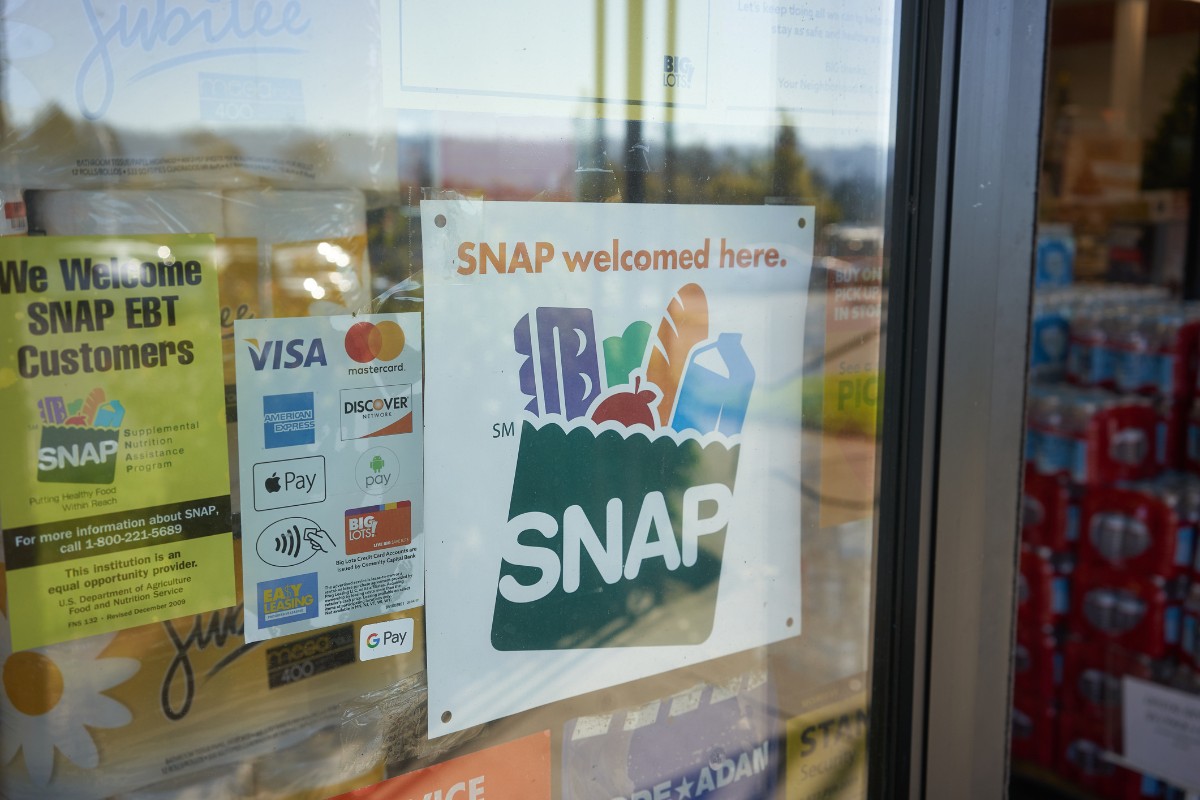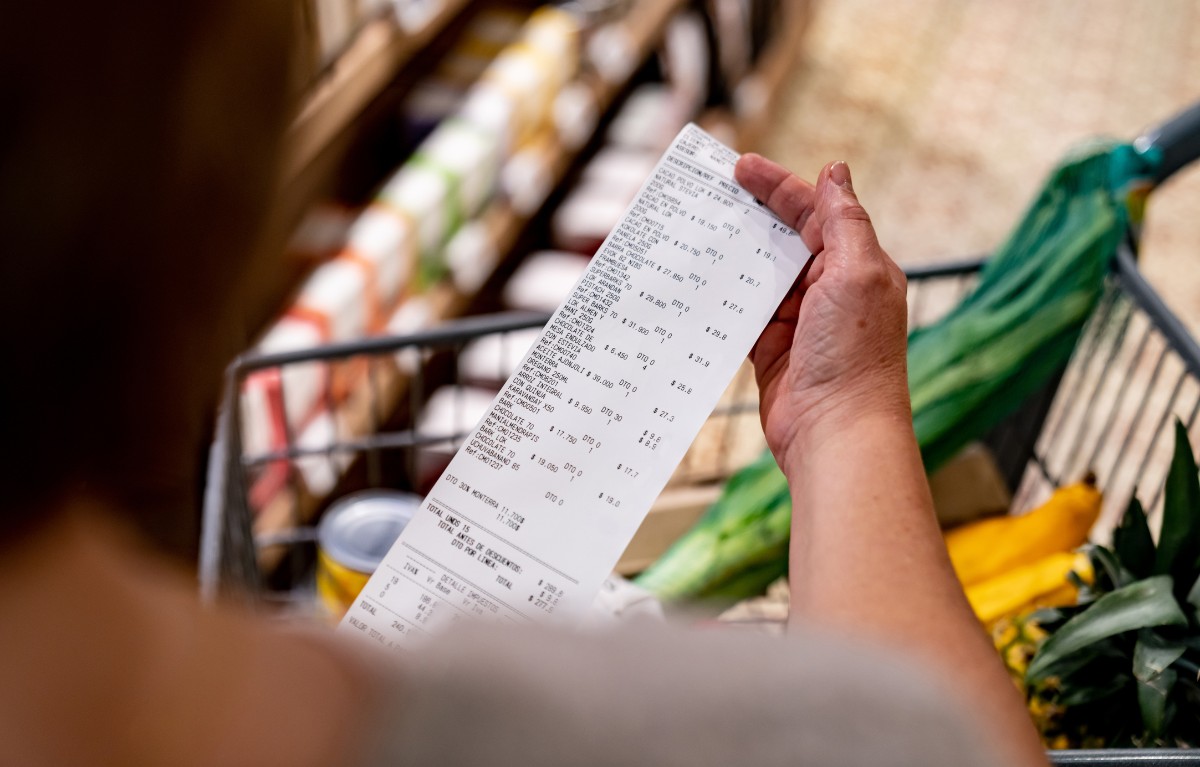[Editor’s Note: Approximately 42 million Americans depend on monthly SNAP benefits via electronic benefit transfer cards. On November 1, these funds are set to cease due to the ongoing U.S. government shutdown, leaving many households vulnerable to food insecurity. While the insights experts outline below are more relevant than ever, this story was reported before the government shutdown and before the loss of SNAP benefits was imminent.]
-
In addition to threatening food security, SNAP cuts could exacerbate educational inequity, as hungry children struggle to learn and thrive in school.
-
The cuts will also have a direct impact on economic health and communities at large. Each SNAP dollar generates roughly $1.54 in economic activity, supporting small grocers, bodegas and farmers’ markets. The cuts will trigger layoffs, business closures and reduced neighborhood access to healthy options.
-
Supplemental federal programs are also at risk. SNAP cuts will directly impact eligibility for WIC and other federal assistance programs, jeopardizing support services like nutrition education, breastfeeding support and access to healthcare.
-
Policy reform and community action are key. Experts emphasize that proactive responses are paramount in staying ahead of the curve, whether reducing wait times at food banks or promoting awareness around accessible meals and school lunch programs.
The Supplemental Nutrition Assistance Program (SNAP), the largest anti-hunger initiative in the United States, plays a crucial role in addressing food insecurity by assisting over 42 million individuals each month, providing financial support for groceries and facilitating access to nutritious food. However, recent funding cuts imposed by the One Big Beautiful Bill Act (OBBBA) are putting SNAP and supplemental programs like WIC at risk, with plans to cut funding by almost $186 billion—the largest cut in American history—according to the Congressional Budget Office.
“Many states are contemplating the elimination of SNAP due to its rising costs and the potential reduction of federal funding,” warns TC alumna Kate MacKenzie (M.S. ’02), Executive Director of New York City's Mayor's Office of Food Policy (MOFP). “For countless families, SNAP determines the difference between putting meals on the table and a mother going without food so her children can eat. It raises the question of: ‘Where will the next meal come from?’”
With so much at stake, how can policymakers, schools and communities work together to navigate these challenges, and what exactly is at risk? We spoke to several TC community experts to learn more.
A Firsthand Look at SNAP’s Impact

(Photo: iStock)
On average, households allocate approximately 30 percent of their net income to food costs. With SNAP, families are allotted about $188 per month to help bridge the gap between grocery store shelves and their tables. In New York alone, SNAP has supported over 2.9 million recipients —many of whom are children, the elderly, disabled adults or veterans— helping them combat hunger and food insecurity. With the imposed cuts, vulnerable populations are left at an even greater disadvantage.
Yet the consequences extend beyond the dinner table. New York City Public Schools (NYCPS) has long relied on SNAP-funded initiatives. With 31 percent of SNAP recipients in NYC being children, this would make it even more critical for families to have access to the free breakfast, lunch and afterschool snacks offered free to all students in NYCPS. “SNAP funding supports not just school meals, but also gardening, cooking classes and food education programs,” explains Pam Koch, Faculty Director at TC’s Laurie M. Tisch Center for Food, Education & Policy. “These cuts threaten vital enrichment programs.”
SNAP was designed to buffer families against inequities, giving children and caregivers a fairer shot at health and stability. When those programs are weakened, it’s not just about empty stomachs—it’s about dignity, equity and opportunity being denied.
The cuts will also have cascading effects for children in school, with Natalie Greaves-Peters (Ph.D. ’25, RDN), Lead Researcher for the LEAF project at Stone Barns Center for Food & Agriculture, noting: “We know hungry kids struggle to learn—SNAP cuts deepen inequities inside and outside the classroom,” explains Greaves-Peters, whose work highlights how nutrition access directly affects children's academic success. “Ultimately, these cuts threaten not only research, but also the wellbeing of families who rely on SNAP for their children’s educational growth.”
The “Ripple Effect”

(Photo: iStock)
Beyond food access, the profound impact of the cuts is expected to affect job security, small businesses, and even supplemental programs, such as the Women, Infants, and Children (WIC) program.
“Eighty percent of individuals enrolled in federal aid programs like WIC also participate in SNAP. Therefore, cuts to SNAP directly affect WIC eligibility,” explains TC alumna Alison Hard (M.A. ’17), Policy Director of the National WIC Association, noting that in order to qualify for WIC, participants must be “adjunctively” eligible in a sister program like SNAP or Medicaid, or below 185 percent of the federal poverty level. “These individuals often rely on costly items like infant formula to meet their nutritional requirements. Eliminating WIC would significantly limit access for these vulnerable populations.”
MacKenzie emphasizes the need to shift the prevailing narrative. For small grocers and neighborhood bodegas— many of which depend on SNAP purchases for up to half of their monthly revenue— the loss of benefits could mean closure, layoffs and reduced neighborhood access to fresh foods. “SNAP serves more than just vulnerable communities—its cuts could lead to widespread economic distress throughout the city.”
According to the U.S. Department of Agriculture (USDA), investments in SNAP create substantial multiplier effects, with each dollar generating $1.54 in economic activity as recipients spend their benefits at local grocery stores, farmers' markets and small businesses. “We must consider the businesses that will suffer from a loss of revenue: How will this affect the city’s tax base,” asks MacKenzie. “And what about the workers who previously thrived within this ecosystem?”
For Greaves-Peters, the cuts will affect her work differently. “Most of the families we [LEAF] serve in the Bronx rely on SNAP, and our surveys from the past two years revealed that even with these benefits, households struggled to secure enough food,” she explains, noting that new policies will “stretch households even further,” making it nearly impossible to put nutritious meals on the table and affect long-term health outcomes. “The programs are lifelines for families. When benefits are cut, it doesn’t just reduce calories — it reduces nutrition security.”
Rising to the Challenge

(Photo: iStock)
Though experts caution that nothing can “fully replace” federal nutrition programs, advocates are mobilizing additional resources to mitigate the uncertainty ahead. In New York, policyholders and communities have already begun mapping out next steps to address hardships felt by cuts. “We aren’t waiting,” insists MacKenzie. “I’m already in discussion with my colleagues in philanthropy, government and beyond to assess our existing systems in the city and what we can do to support our most vulnerable populations, whether that’s updating outdated database technology or simply reducing wait times at food banks.”
Recognizing the potential implications from SNAP cuts, it’s critical to consider how these changes will reverberate throughout supplemental programs. Hard emphasizes the importance of providing families with “as much information as possible” regarding the upcoming changes to WIC. “Policy shifts can often feel abstract and disconnected from our daily lives, creating a significant need to educate families on what is changing and what remains the same. It’s crucial to inform them about the decisions that led us here; this situation reflects deliberate policy choices made by officials in power, fully aware of the implications for our children, food security and healthcare.”
We have to look at reforming systems that could have been improved 40 years ago and improve those systems now. There is no time to waste.
On West 120th Street, TC’s Laurie M. Tisch Center for Food, Education & Policy is exploring what cuts will look like for local residents and how they can support the community, similar to the initiatives taken during the COVID-19 pandemic. “Our primary focus will be on supporting our community and ensuring access to food,” explains Koch. “We intend to communicate widely about local food availability, including school meals, grab-and-go options and enhanced meals designed to help families make ends meet.” She adds that state and local policymakers can also play a role by investing municipal resources into school meal programs.
"These educational opportunities will become more essential for families,” explains Greaves-Peters, who notes that pairing food distribution with education is key in staying ahead of the curve. “Through the LEAF program, families receive fresh produce as well as gardening kits and cooking resources, which increases both access and agency. While these strategies can’t erase the harm of federal cuts, they demonstrate what’s possible when communities lead the way.”
For food experts and advocates across the five boroughs and beyond, the call to action remains clear: food access is not just vital—it is an urgent, fundamental right that demands visibility.
“There is power in community advocacy— volunteering, donating or pressing local leaders to prioritize food access,” Greaves-Peters concludes. “While these actions can’t replace federal programs, they demonstrate how we can mitigate harm and strengthen community resilience, ensuring every family has access to nourishing food that supports their health, and equally important, their future.”
Food Assistance Resources
For food assistance and support resources in your area, visit the following:
• USDA Food and Nutrition Service
• Freedge
